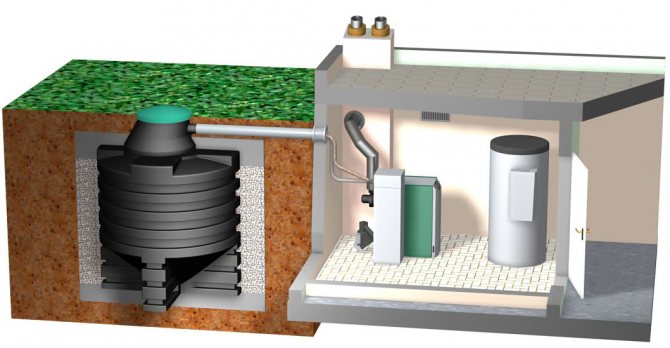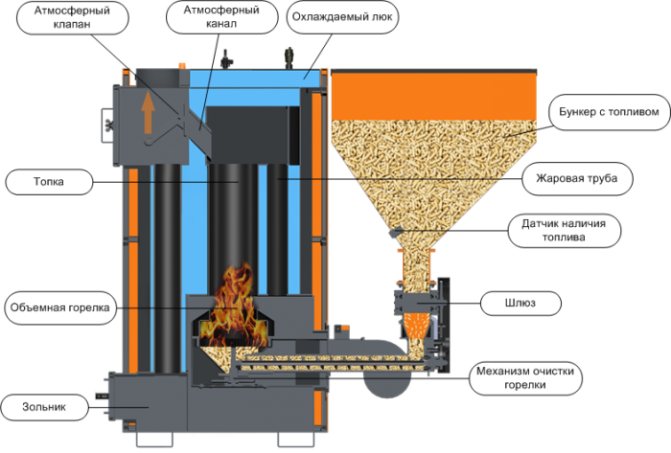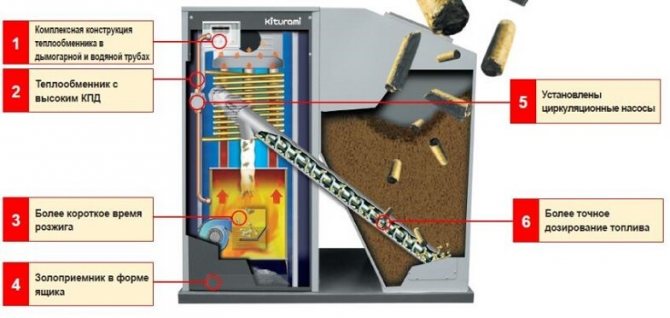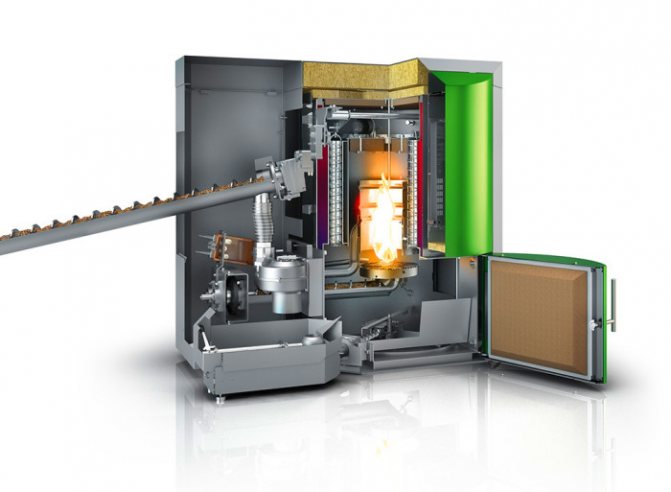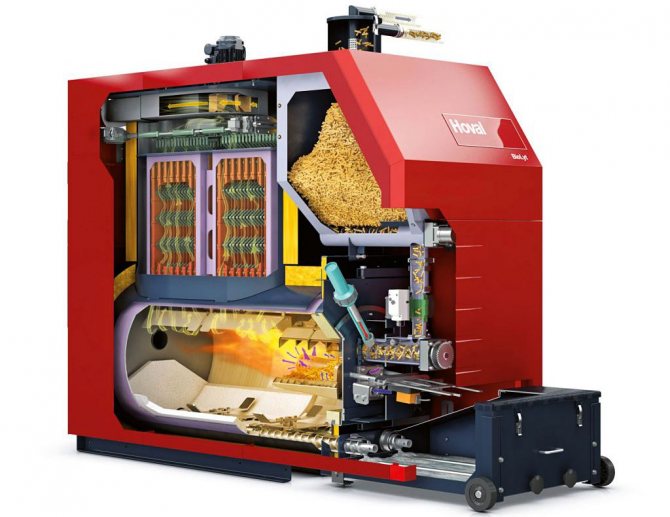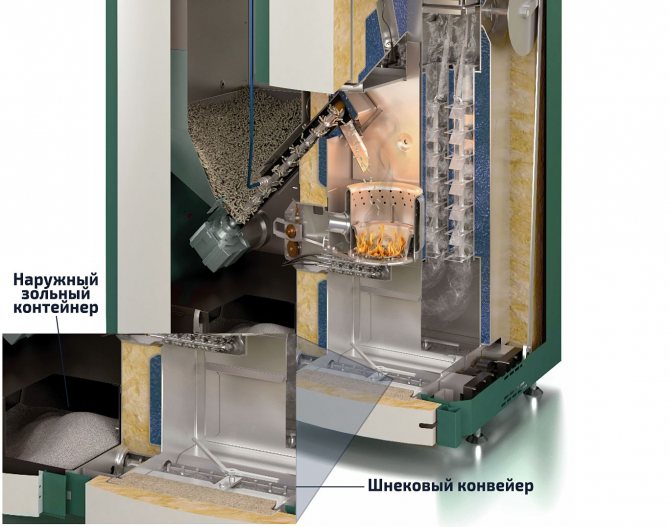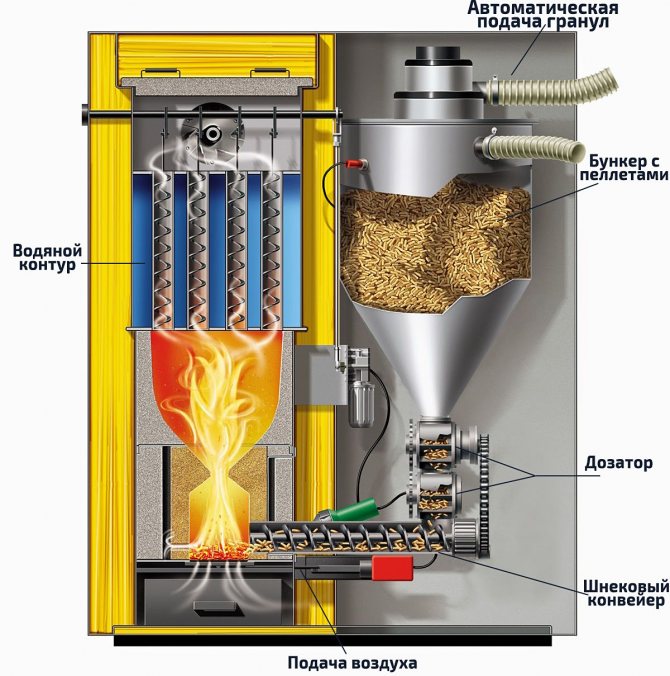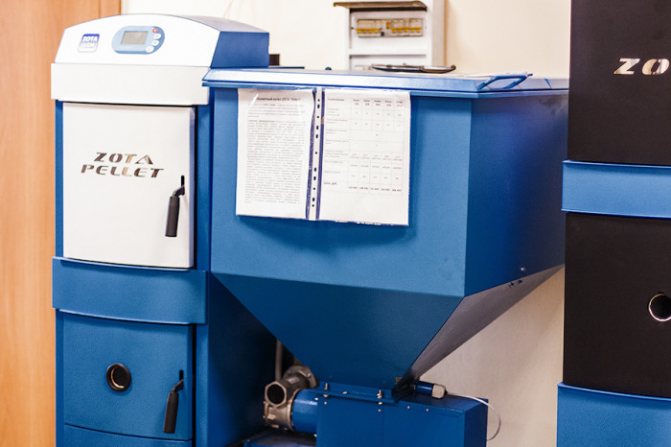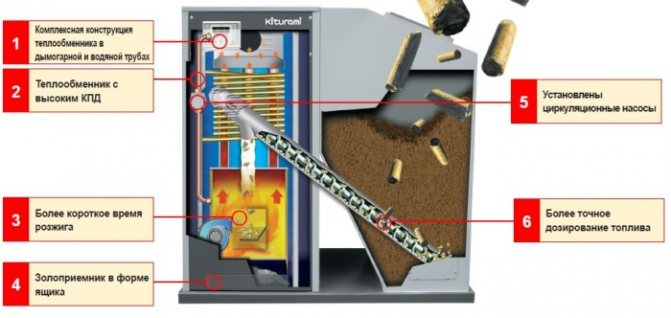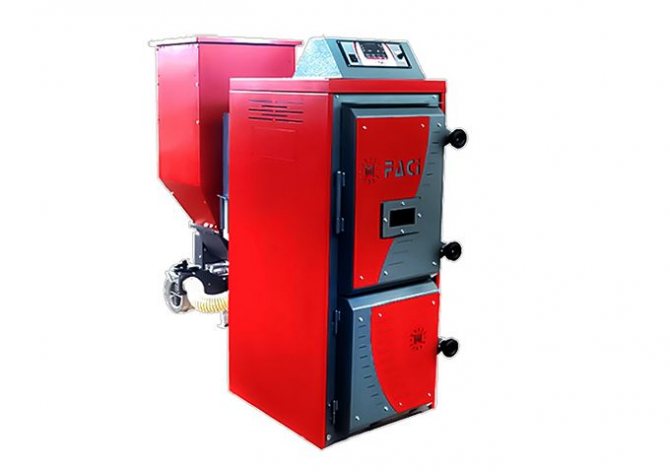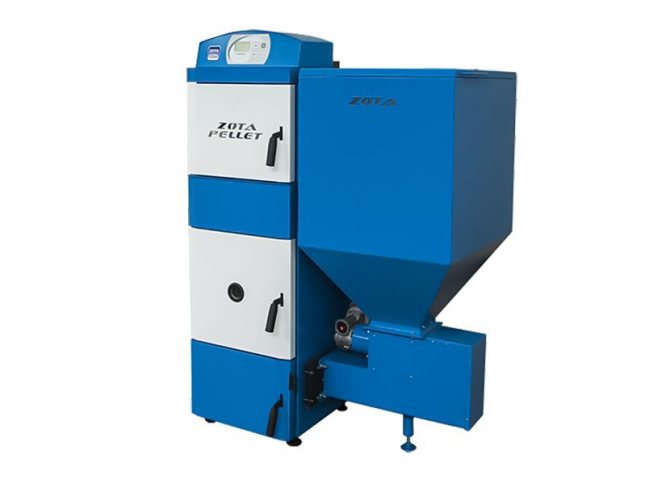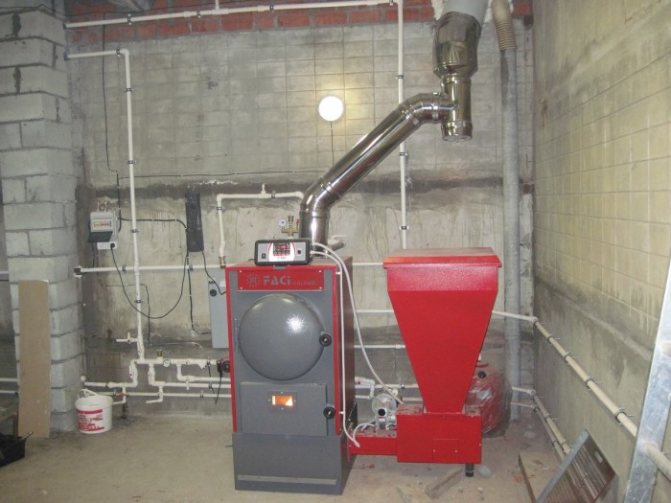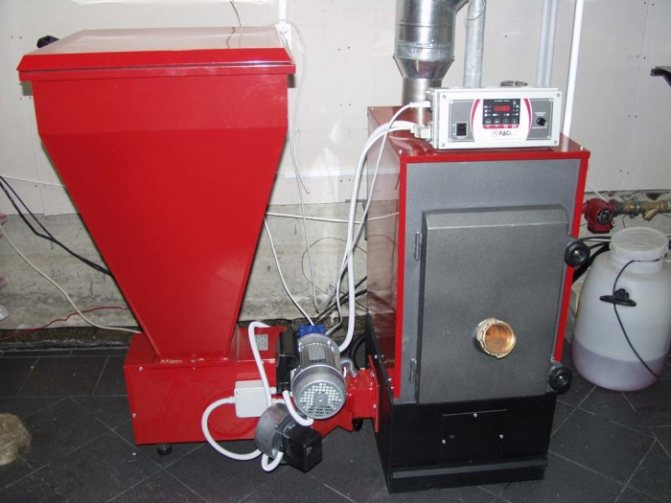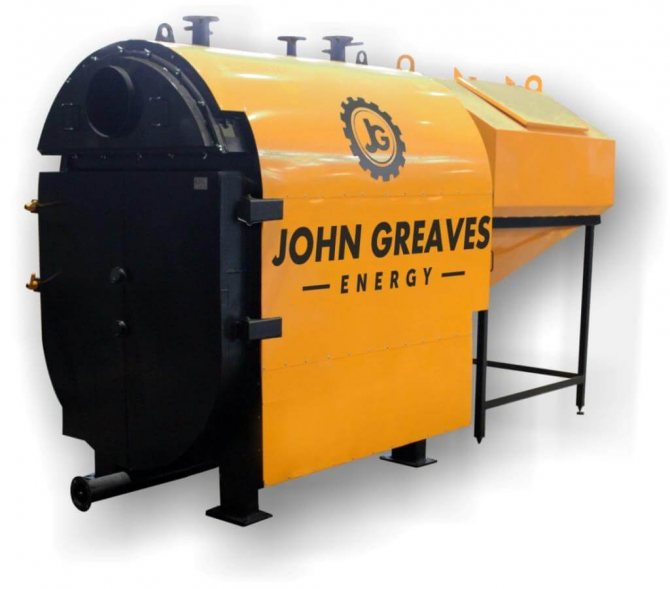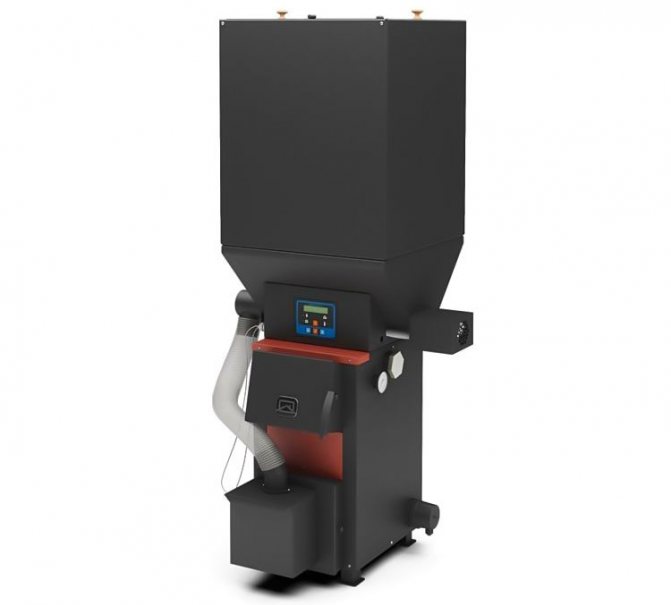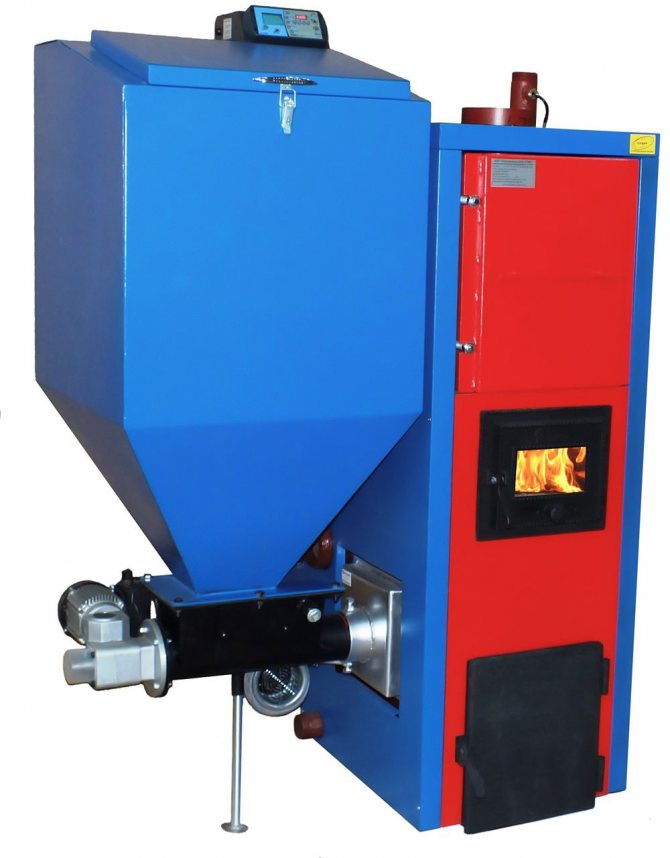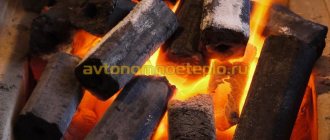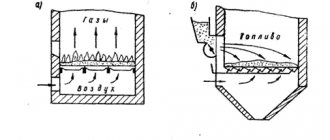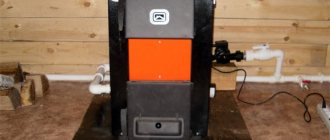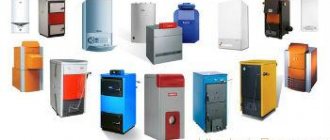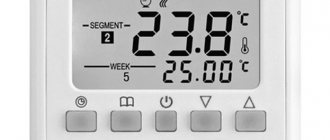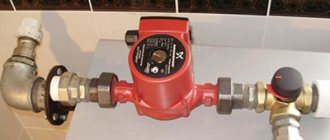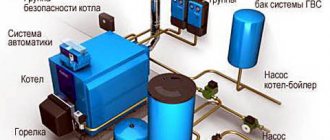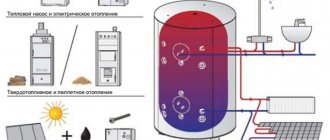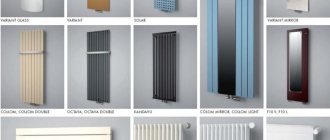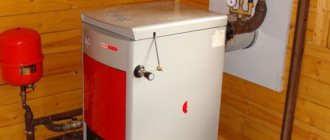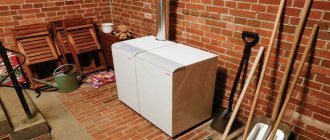What are pellet stoves?
Pellet boilers, or fireplaces, are constructions that heat the premises due to the combustion of a special type of fuel - pellets. The latter are small compressed pellets from wood waste. The fuel is completely safe - the absence of any harmful substances makes it environmentally friendly. Including glue.
There are two main types of pellets:
- industrial; they are made from different types of waste, therefore the consumption of granules is higher, and the efficiency of the furnace is lower;
- household; these are made from high quality raw materials, and therefore the thermal efficiency is much higher.
It is recommended to use only the latter type for loading boilers in private buildings. Moreover, it is advisable to select pellets based on the characteristics of a particular device - this will increase the heat transfer and the operating life of the furnace.
Types of pellet boilers
Heating equipment of this type is classified based on different criteria.
According to the materials from which the structure is made
Most fireplaces are made of high quality steel. Devices, the main material of which is cast iron, are much less common.
By type of burner
There are ovens:
- torch; the most popular "household" option; flare boilers are characterized by low power, ease of operation and adjustment, reliability; among the minuses of the type - sensitivity to fuel quality and unidirectional heating of the furnace walls;
- fireplaces; characteristic feature - the pellets are burned in a special pellet bowl; there are fewer regulation possibilities, and there is also a demand for fuel; but such stoves can be placed in rooms - the equipment is quiet and safe;
- volumetric combustion; much more often, similar burners are used in industrial-type devices, but they also have a place in household units; minus - increased bulkiness; advantages - higher power and undemandingness to granules (in Russian realities, the latter aspect is of considerable importance).
By type of fuel supply
Furnaces are divided into:
- mechanical; the operator of such a boiler turns into a stoker, forced to constantly monitor the combustion process;
- semi-automatic; manually only power is set here - the rest of the control falls on the shoulders of the automation; from the point of view of the ratio of cost and quality, this option is preferable to others;
- automatic; only a fuel load is required from the user - the automation will do the rest; but for the initial setup of the equipment, it is better to call specialists - they will make all the necessary calculations based on the size of the room, the required temperature and other parameters.
By type of fuel
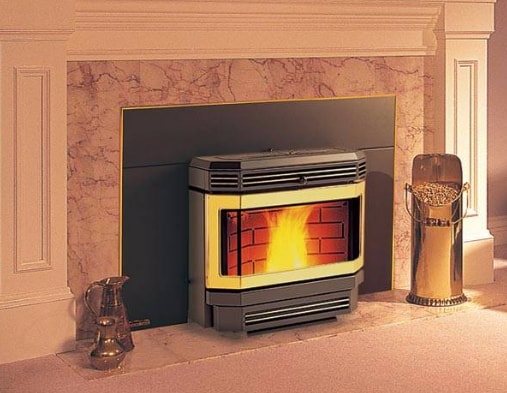
Picture 2. Pellet boiler
Pellet boilers operate on different types of fuel. There are ovens:
- working exclusively on wood pellets; in the absence of the opportunity to regularly provide oneself with pressed fuel, it makes no sense to purchase such equipment; even at the stage of choosing a furnace, it is necessary to think over options for supplying granules of a suitable type;
- partially combined; the use of briquettes and firewood is allowed - this is facilitated by the format of the firebox; but the main role of fuel is played by pellets, while other options are helpful in situations where there is no access to pellets; ignoring this rule leads to equipment failure;
- combined; these units have several furnaces of different formats; therefore, it is allowed to use both pellets and firewood with briquettes on a regular basis; the disadvantages of the combined devices are the high price and decent dimensions.
By appointment
Depending on the goals, the equipment is divided into:
- fireplaces-convectors; their task is to heat the air; the most popular option - such stoves take up little space, have the "right" to be placed in residential premises and easily "get along" with any interior design;
- water heating boilers; differ in solid size and expressionless appearance; they are usually installed in utility rooms or basements;
- hybrid aggregates; the task of combined devices is both direct heating of air and heating of the coolant; in terms of design, they are close to convection equipment.
Recommendations for manufacturing
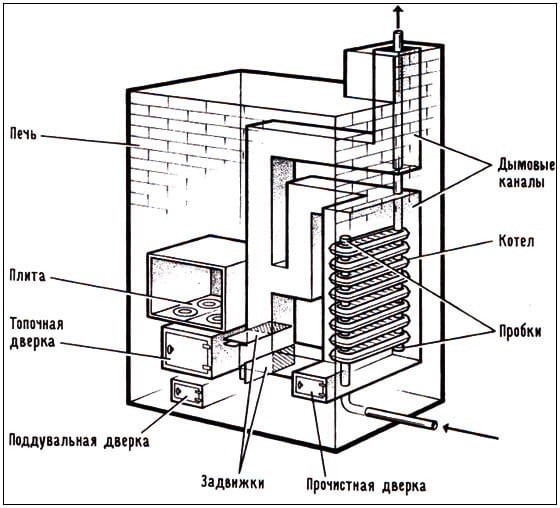

The first step is to determine the design feature of the furnace. It is necessary to exclude the elements which will not be made by hand - they will need to be purchased - this is a set of automation and a burner device. Some craftsmen manage to make a burner with their own hands, but this will take a lot of time and a lot of effort, but the result may be unexpected, for example, high flow rate or malfunctioning.
It is wiser to purchase a ready-made sample and use it in a self-made structure. In order to have the possibility of improvement in the future, it is better to make the design universal. It is more correct to make a pellet boiler with a water circuit, with the ability to burn coal and firewood... By and large, the processes of heat exchange occurring in these types of heating differ in the way of combustion and the type of fuel.
This provides the following benefits:
- in view of the fact that the production of pellets in our country is not so widespread, and interruptions are possible with fuel, it is better that the burner is removable, so that, if necessary, it is possible to heat the dwelling with coal and firewood;
- it will also be possible to use diesel or natural gas by replacing the special burner.
Assembling the structure occurs by welding... The walls of the water grid must be made as rigid as possible by welding pieces of reinforcement or a metal corner on them. After completing the welding work, it is imperative to check all seams for permeability and, in case necessary, get rid of the shortcomings.
The device of furnaces operating on fuel pellets
Figure 3. Pellet stove device
Pellet stoves have the following design:
- metal body - quality stainless steel or cast iron;
- bunker area for filling fuel; some models are designed for external silos;
- an electric screw feeding granules in portions into the combustion chamber;
- fan; its purpose is to supply cold air from the room to the device and to remove hot air (together with working off) to the outside;
- firebox;
- burner;
- ash pan - an element for collecting wood waste;
- a heat exchanger designed to circulate cold / hot air;
- thermostat and control panel.
Furnace working principle
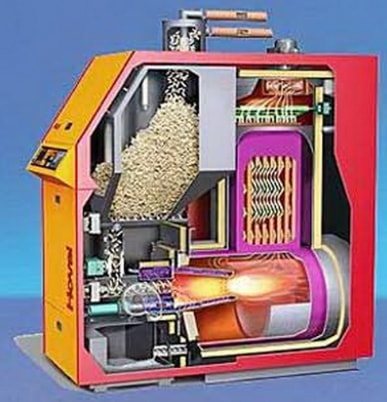

Picture 4. Pellet boiler of industrial type
For the operation of pellet boilers, electricity is needed. Thanks to him, the control unit, fan and auger work. After loading the granules, they are fed into the combustion chamber in portions - by means of a screw. Due to the suction of air from the room, the fuel is ignited. It takes a maximum of 10 minutes to start the system.
Important! The independence of stoves from power systems is conditional. The operation of boilers is impossible without electricity
The gases formed during the combustion process enter the heat exchanger. From here, a fan distributes them around the room. The smoke goes into the chimney. Most modern models are equipped with a thermostat that sets and controls a certain temperature in the room.
The resulting ash goes to the ash pan.There is very little waste from the burnt pellets. The average cleaning frequency is once a month. Advanced models require even rarer attention to this aspect - even to the extent of disposing of waste every two months.
In the presence of a water heating system, along with air, the liquid also heats up. Water circulates through pipes, if necessary, entering special containers.
Automation greatly simplifies the interaction of the user with the oven. The computerized system makes every stage of the boiler more efficient and safer.
Figure 5. Boiler operation diagram
Control automation
Automatic boilers are attractive in that they can work independently, without human attention. Pellet feeding, power regulation and circuit operation are automatic, under the control of "artificial intelligence".
This option is attractive for its economy and efficiency: the amount of fuel is calculated by a special control unit, which turns on the conveyor only if necessary. This moment is determined by a temperature sensor installed in a heated room.
The weak point of such a boiler is its dependence on electricity. In the absence of electricity, it turns off, since the drives of the conveyors and throttle valves and other automation operate on electricity.
An ordinary, manual boiler requires attention, but it works anywhere and for as long as you like. If there are frequent power outages in the area where the house is located, it makes sense to give preference to this option, and if you choose a boiler with automation, then take care of an autonomous source of electricity.
Advantages and disadvantages of pellet boilers
The popularity of pellet boilers is growing due to a series of advantages. Among them:
- efficient heat dissipation; The efficiency of such devices is comparable to the efficiency of gas heating devices and is significantly higher than the efficiency of wood-burning stoves;
- fuel economy;
- complete environmental friendliness; the absence of any harmful substances in the granules;
- autonomy; subject to the availability of an automated system, the user is deprived of the need to control the combustion process - the automation does almost everything for a person;
- independence from main power systems;
- almost complete zero waste - when burned, the granules leave a very small amount of ash; ash pan cleaning is rarely required;
- equipment safety and no need to coordinate the installation with the relevant services;
- aesthetic design of boilers-fireplaces - the ability to "fit" the unit into any interior.
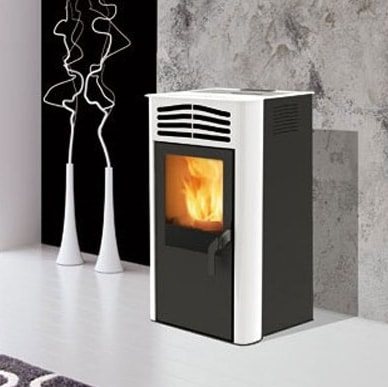

Figure 6. Furnace with a modern aesthetic design
Not without its drawbacks. These include:
- the need for electricity, without which it is impossible to ignite fuel, the operation of the auger and the control unit;
- high cost of equipment; average price range - 100,000-1,000,000 rubles;
- dependence of European models on Russian energy systems and pellet quality; devices can be sensitive to power surges and demanding fuel; when choosing a stove, you should definitely consider protection against voltage surges and the possibility of purchasing granules suitable for a particular model.
If financially available, the advantages of ovens outweigh their disadvantages.
Installation
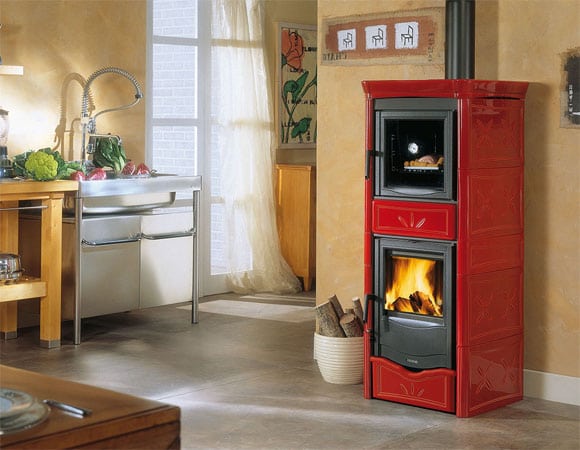

Installation of the structure is not much different from similar installations of solid fuel boilers. The primary concern is the correct placement of the equipment and fuel delivery device. There must be distance of 70 cm, and the front part is about 2 meters. If during the ignition of the boiler at the time of stopping, a coolant is supplied, this will lead to the formation of condensate with soot and ash. To avoid this process, the boiler piping with a water circuit is used for installation, equipped with a mixing unit.
It is impossible forget about security measures - this is, first of all, a pressure sensor and a safety valve, which must be installed on the outlet pipe. To drown without fear, you need to adhere to safety standards. Practice shows that The efficiency of factory boilers is, of course, higherbut here's the cost, reliability and availability prove superiority pellet stoves, made by hand.
How to choose a pellet stove?
Furnace selection criteria:
- power; the most important aspect - when choosing a device, you need to build on the volume of the room; average required power - 1 kW / 10 m2; the calculation scheme is valid for rooms with a ceiling height of up to 3 m;
- type and consumption of granules; the need for pellets is variable and tied to the design of the stove and the volume of the room; average consumption of pressed fuel - ton / month;
- manufacturer and distributor; it is recommended to buy equipment from a seller who provides comprehensive or at least service;
- heat exchanger material; branded manufacturers produce furnaces only with steel heat exchangers; less popular manufacturers allow the manufacture of elements from cast iron; the cast iron option is less preferable - it is heavier and characterized by greater thermal inertness.
Heating a house with pellets: the price of the issue
Of course, one of the first questions that arise is the price of pellet heating. To calculate future financial costs, it is necessary to determine the average consumption of pellet fuel per month. It will depend on the area of the heated room and the average monthly air temperature. So, for example, a house of 100 square meters with an average monthly temperature of -10 degrees will consume 668 to 1113 kg of pellets per month. Thus, on average during the heating season, you will consume 3-5 tons of pellets. Of course, these figures will be several times lower if you do not constantly live in a country house, but come there for a weekend or on holidays.
Pellets are sold in bags of 20, 30, 40 kg or in big bags of 500-1000 kg. White pellets cost from 5500 to 7500 rubles. per ton, for gray pellets will have to pay from 4000 to 6000 rubles. per ton, and agricultural pellets will cost 1500–3500 rubles. per ton.
Read also: Strawberry sweet tooth description of the variety photo reviews
It is cheaper to buy pellets in spring and summer, and better - directly from producers. Therefore, when deciding in favor of pellet heating, you should first make sure that there are at least five manufacturers of this type of fuel in your region, so that there are no problems with its purchase and transportation.
Errors in the operation of pellet stoves
A pellet boiler can be expensive and of high quality, but if the choice of the appliance was wrong, disappointment is inevitable. The main mistake lies in the general non-compliance of the boiler with the goals of consumers. You need to be clearly aware of your needs and how the oven is able to satisfy them. First of all, the equipment must be evaluated in terms of its type and selection criteria.
A common mistake is the incorrect calculation of the boiler power and the heat loss of the room. The result is too low or too high temperature. Better to spend more time, but make the right calculations. Better yet, entrust it to a specialist.
Poor oven performance is another annoying problem. It is usually connected (if we are not talking about low-quality equipment) with the realities typical for Russia - the mentioned unimportant quality of power grids and fuel.
Let's briefly list three more possible troubles:
- chimney sparking; the reason is the wrong choice of the latter;
- wood dust scattering around the room; the reason is the incorrect choice of a place for the oven;
- increased frequency of filling the ash pan; the reason is incorrect setting of the pellet burner.

